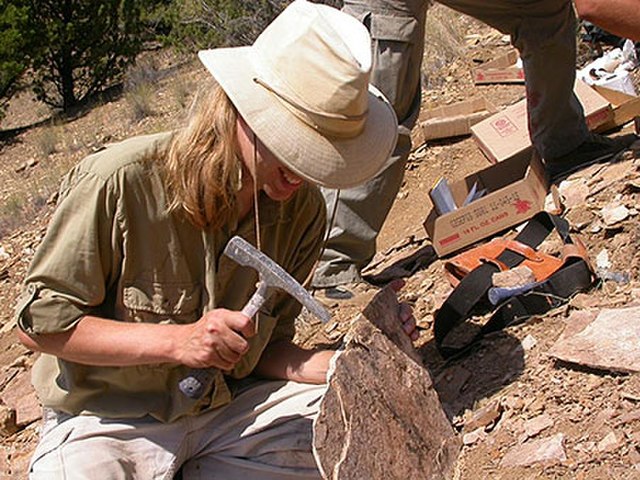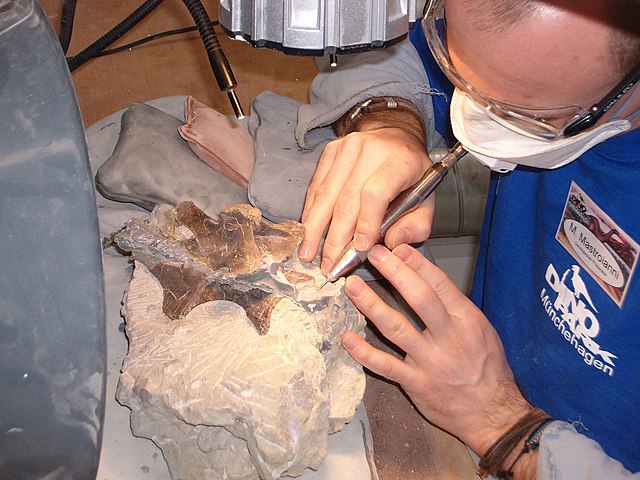Micropaleontology is the branch of paleontology (palaeontology) that studies microfossils, or fossils that require the use of a microscope to see the organism, its morphology and its characteristic details.
Marine microfossils: (diatom, ostracod, radiolarian, sponge spicule, radiolarian, planktonic foraminiferan (two), coccolith)
Diatomaceous earth is a soft, siliceous, sedimentary rock made up of microfossils in the form of the frustules (shells) of single cell diatoms. This sample consists of a mixture of centric (radially symmetric) and pennate (bilaterally symmetric) diatoms. This image of diatomaceous earth particles in water is at a scale of 6.236 pixels/μm, the entire image covers a region of approximately 1.13 by 0.69 mm.
Fusulinid (Triticites) from the Plattsmouth Chert, Red Oak, Iowa (Permian).
Fossil nummulitid foraminiferans showing microspheric and megalospheric individuals; Eocene of the United Arab Emirates; scale in mm.
Paleontology, also spelled palaeontology or palæontology, is the scientific study of life that existed prior to, and sometimes including, the start of the Holocene epoch. It includes the study of fossils to classify organisms and study their interactions with each other and their environments. Paleontological observations have been documented as far back as the 5th century BC. The science became established in the 18th century as a result of Georges Cuvier's work on comparative anatomy, and developed rapidly in the 19th century. The term has been used since 1822 formed from Greek παλαιός, ὄν, and λόγος.
A paleontologist at work at John Day Fossil Beds National Monument
The preparation of the fossilised bones of Europasaurus holgeri
Analyses using engineering techniques show that Tyrannosaurus had a devastating bite, but raise doubts about its running ability.
Cambrian trace fossils including Rusophycus, made by a trilobite








